Voyager 2
 Voyager 1, artist's impression | |
| Mission type | Planetary exploration |
|---|---|
| Operator | NASA / JPL[1] |
| COSPAR ID | 1977-076A[2] |
| SATCAT № | 10271[3] |
| Website |
voyager |
| Mission duration |
39 years, 3 months and 15 days elapsed Planetary mission: 12 years, 1 month, 12 days Interstellar mission: 27 years, 2 months and 3 days elapsed (continuing) |
| Spacecraft properties | |
| Manufacturer | Jet Propulsion Laboratory |
| Launch mass | 825.5 kilograms (1,820 lb) |
| Power | 420 watts |
| Start of mission | |
| Launch date | August 20, 1977, 14:29:00 UTC |
| Rocket | Titan IIIE |
| Launch site | Cape Canaveral LC-41 |
| Flyby of Jupiter | |
| Closest approach | July 9, 1979, 22:29:00 UTC |
| Distance | 570,000 kilometers (350,000 mi) |
| Flyby of Saturn | |
| Closest approach | August 25, 1981, 03:24:05 UTC |
| Distance | 101,000 km (63,000 mi) |
| Flyby of Uranus | |
| Closest approach | January 24, 1986, 17:59:47 UTC |
| Distance | 81,500 km (50,600 mi) |
| Flyby of Neptune | |
| Closest approach | August 25, 1989, 03:56:36 UTC |
| Distance | 4,951 km (3,076 mi) |
Voyager 2 is a space probe launched by NASA on August 20, 1977 to study the outer planets. Part of the Voyager program, it was launched 16 days before its twin, Voyager 1, on a trajectory that took longer to reach Jupiter and Saturn but enabled further encounters with Uranus and Neptune.[4] It is the only spacecraft to have visited either of the ice giants.
Its primary mission ended with the exploration of the Neptunian system on October 2, 1989, after having visited the Uranian system in 1986, the Saturnian system in 1981, and the Jovian system in 1979. Voyager 2 is now in its extended mission to study the outer reaches of the Solar System and has been operating for 39 years, 3 months and 15 days. It remains in contact through the Deep Space Network.[5]
At a distance of 112.5 AU (1.68×1010 km) from the Sun as of October 2016,[6] Voyager 2 is one of the most distant human-made objects, along with Voyager 1, New Horizons, Pioneer 10 and Pioneer 11. The probe was moving at a velocity of 15.4 km/s (55,000 km/h) relative to the Sun as of December 2014 and is traveling through the heliosheath.[6][7] Upon reaching interstellar space, Voyager 2 is expected to provide the first direct measurements of the density and temperature of the interstellar plasma.[8]
Voyager set course for Sirius – the brightest star in the sky. Traveling 40,000mph it will take 296,000 years to reach Sirius.
Mission background
History
In the early 1960s, it was realized that a coincidental alignment of the outer planets would occur in the late 1970s and enable a single probe to visit Jupiter, Saturn, Uranus, and Neptune by taking advantage of the then-new technique of gravity assists. NASA began work on a Grand Tour, which evolved into a massive project involving two groups of two probes each, with one group visiting Jupiter, Saturn, and Pluto and the other Jupiter, Uranus, and Neptune. The spacecraft would be designed with redundant systems to ensure survival through the entire tour. By 1972 the mission was scaled back and replaced with two Mariner-derived spacecraft, the Mariner Jupiter-Saturn probes. To keep apparent lifetime program costs low, the mission would include only flybys of Jupiter and Saturn, but keep the Grand Tour option open.[4]:263 As the program progressed, the name was changed to Voyager.[9]
The primary mission of Voyager 1 was to explore Jupiter, Saturn, and Saturn's moon, Titan. Voyager 2 was also to explore Jupiter and Saturn, but on a trajectory that would have option of continuing on to Uranus and Neptune, or being redirected to Titan as a backup for Voyager 1. Upon successful completion of Voyager 1's objectives, Voyager 2 would get a mission extension to send the probe on towards Uranus and Neptune.[4]
Spacecraft design
Constructed by the Jet Propulsion Laboratory (JPL), Voyager 2 included 16 hydrazine thrusters, three-axis stabilization, gyroscopes and celestial referencing instruments (Sun sensor/Canopus Star Tracker) to maintain pointing of the high-gain antenna toward Earth. Collectively these instruments are part of the Attitude and Articulation Control Subsystem (AACS) along with redundant units of most instruments and 8 backup thrusters. The spacecraft also included 11 scientific instruments to study celestial objects as it traveled through space.[10]
Communications
Built with the intent for eventual interstellar travel, Voyager 2 included a large, 3.7 m (12 ft) parabolic, high-gain antenna (see diagram) to transceive data via the Deep Space Network on the Earth. Communications are conducted over the S-band (about 13 cm wavelength) and X-band (about 3.6 cm wavelength) providing data rates as high as 115.2 kilobits per second at the distance of Jupiter, and then ever-decreasing as the distance increased, because of the inverse-square law. When the spacecraft is unable to communicate with Earth, the Digital Tape Recorder (DTR) can record about 64 kilobytes of data for transmission at another time.[11]
Power
The spacecraft was built with 3 Multihundred-Watt radioisotope thermoelectric generators (MHW RTG). Each RTG includes 24 pressed plutonium oxide spheres and provides enough heat to generate approximately 157 watts of power at launch. Collectively, the RTGs supply the spacecraft with 470 watts at launch and will allow operations to continue until at least 2020.[10][12][13]
-

RTG diagram 1
-

RTG diagram 1
-
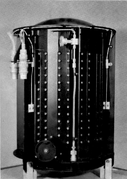
RTG unit
Scientific instruments
| Instrument Name | Abr. | Description | ||||||||||||||||||||||||||||||||||||||||||||||||||||||||||||||||||||||||||||||||||||||||||||
|---|---|---|---|---|---|---|---|---|---|---|---|---|---|---|---|---|---|---|---|---|---|---|---|---|---|---|---|---|---|---|---|---|---|---|---|---|---|---|---|---|---|---|---|---|---|---|---|---|---|---|---|---|---|---|---|---|---|---|---|---|---|---|---|---|---|---|---|---|---|---|---|---|---|---|---|---|---|---|---|---|---|---|---|---|---|---|---|---|---|---|---|---|---|---|
| Imaging Science System (disabled) |
(ISS) | Utilizes a two-camera system (narrow-angle/wide-angle) to provide imagery of Jupiter, Saturn and other objects along the trajectory. More
| ||||||||||||||||||||||||||||||||||||||||||||||||||||||||||||||||||||||||||||||||||||||||||||
| Radio Science System (disabled) |
(RSS) | Utilized the telecommunications system of the Voyager spacecraft to determine the physical properties of planets and satellites (ionospheres, atmospheres, masses, gravity fields, densities) and the amount and size distribution of material in Saturn's rings and the ring dimensions. More
| ||||||||||||||||||||||||||||||||||||||||||||||||||||||||||||||||||||||||||||||||||||||||||||
| Infrared Interferometer Spectrometer (disabled) |
(IRIS) | Investigates both global and local energy balance and atmospheric composition. Vertical temperature profiles are also obtained from the planets and satellites as well as the composition, thermal properties, and size of particles in Saturn's rings. More
| ||||||||||||||||||||||||||||||||||||||||||||||||||||||||||||||||||||||||||||||||||||||||||||
| Ultraviolet Spectrometer (disabled) |
(UVS) | Designed to measure atmospheric properties, and to measure radiation. More
| ||||||||||||||||||||||||||||||||||||||||||||||||||||||||||||||||||||||||||||||||||||||||||||
| Triaxial Fluxgate Magnetometer (active) |
(MAG) | Designed to investigate the magnetic fields of Jupiter and Saturn, the solar-wind interaction with the magnetospheres of these planets, and the interplanetary magnetic field out to the solar wind boundary with the interstellar magnetic field and beyond, if crossed. More
| ||||||||||||||||||||||||||||||||||||||||||||||||||||||||||||||||||||||||||||||||||||||||||||
| Plasma Spectrometer (active) |
(PLS) | Investigates the macroscopic properties of the plasma ions and measures electrons in the energy range from 5 eV to 1 keV. More
| ||||||||||||||||||||||||||||||||||||||||||||||||||||||||||||||||||||||||||||||||||||||||||||
| Low Energy Charged Particle Instrument (active) |
(LECP) | Measures the differential in energy fluxes and angular distributions of ions, electrons and the differential in energy ion composition. More
| ||||||||||||||||||||||||||||||||||||||||||||||||||||||||||||||||||||||||||||||||||||||||||||
| Cosmic Ray System (active) |
(CRS) | Determines the origin and acceleration process, life history, and dynamic contribution of interstellar cosmic rays, the nucleosynthesis of elements in cosmic-ray sources, the behavior of cosmic rays in the interplanetary medium, and the trapped planetary energetic-particle environment. More
| ||||||||||||||||||||||||||||||||||||||||||||||||||||||||||||||||||||||||||||||||||||||||||||
| Planetary Radio Astronomy Investigation (disabled) |
(PRA) | Utilizes a sweep-frequency radio receiver to study the radio-emission signals from Jupiter and Saturn. More Voyager: Sounds Of The Cosmos, the Album made from Voyager's PRA Instrument Recordings
| ||||||||||||||||||||||||||||||||||||||||||||||||||||||||||||||||||||||||||||||||||||||||||||
| Photopolarimeter System (disabled) |
(PPS) | Utilized a telescope with a polarizer to gather information on surface texture and composition of Jupiter and Saturn and information on atmospheric scattering properties and density for both planets. More
| ||||||||||||||||||||||||||||||||||||||||||||||||||||||||||||||||||||||||||||||||||||||||||||
| Plasma Wave System (partially disabled) |
(PWS) | Provides continuous, sheath-independent measurements of the electron-density profiles at Jupiter and Saturn as well as basic information on local wave-particle interaction, useful in studying the magnetospheres. More
| ||||||||||||||||||||||||||||||||||||||||||||||||||||||||||||||||||||||||||||||||||||||||||||
For more details on the Voyager space probes' identical instrument packages, see the separate article on the overall Voyager Program.
| Images of the spacecraft | ||||||||
|---|---|---|---|---|---|---|---|---|
| ||||||||
Mission profile
| Timeline of travel | ||||||||||||||||||||||||||||||||||||||||||||||||||||||||||||||||||||||||||||||||||||||||||||||||||||||||||||||||||||||||||||||||||||||||||
|---|---|---|---|---|---|---|---|---|---|---|---|---|---|---|---|---|---|---|---|---|---|---|---|---|---|---|---|---|---|---|---|---|---|---|---|---|---|---|---|---|---|---|---|---|---|---|---|---|---|---|---|---|---|---|---|---|---|---|---|---|---|---|---|---|---|---|---|---|---|---|---|---|---|---|---|---|---|---|---|---|---|---|---|---|---|---|---|---|---|---|---|---|---|---|---|---|---|---|---|---|---|---|---|---|---|---|---|---|---|---|---|---|---|---|---|---|---|---|---|---|---|---|---|---|---|---|---|---|---|---|---|---|---|---|---|---|---|---|
| ||||||||||||||||||||||||||||||||||||||||||||||||||||||||||||||||||||||||||||||||||||||||||||||||||||||||||||||||||||||||||||||||||||||||||
Launch and trajectory
The Voyager 2 probe was launched on August 20, 1977, by NASA from Space Launch Complex 41 at Cape Canaveral, Florida, aboard a Titan IIIE/Centaur launch vehicle. Two weeks later, the twin Voyager 1 probe would be launched on September 5, 1977. However, Voyager 1 would reach both Jupiter and Saturn sooner, as Voyager 2 had been launched into a longer, more circular trajectory.
-
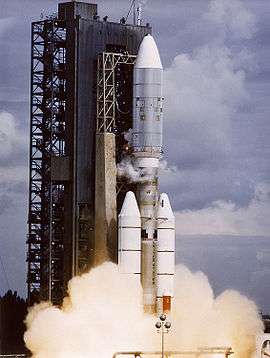
Voyager 2 launch on August 20, 1977 with a Titan IIIE/Centaur.
-

Trajectory of Voyager 2 primary mission.
-
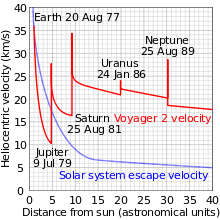
Plot of Voyager 2's heliocentric velocity against its distance from the Sun, illustrating the use of gravity assists to accelerate the spacecraft by Jupiter, Saturn and Uranus. To observe Triton, Voyager 2 passed over Neptune's north pole, resulting in an acceleration out of the plane of the ecliptic, and, as a result, a reduced velocity relative to the Sun.[1]
Encounter with Jupiter
The Voyager 2 closest approach to Jupiter occurred on July 9, 1979. It came within 570,000 km (350,000 mi) of the planet's cloud tops.[20] It discovered a few rings around Jupiter, as well as volcanic activity on the moon Io.
The Great Red Spot was revealed as a complex storm moving in a counterclockwise direction. An array of other smaller storms and eddies were found throughout the banded clouds.
Discovery of active volcanism on Io was easily the greatest unexpected discovery at Jupiter. It was the first time active volcanoes had been seen on another body in the Solar System. Together, the Voyagers observed the eruption of nine volcanoes on Io, and there is evidence that other eruptions occurred between the two Voyager fly-bys.
The moon Europa displayed a large number of intersecting linear features in the low-resolution photos from Voyager 1. At first, scientists believed the features might be deep cracks, caused by crustal rifting or tectonic processes. The closer high-resolution photos from Voyager 2, however, left scientists puzzled: The features were so lacking in topographic relief that as one scientist described them, they "might have been painted on with a felt marker." Europa is internally active due to tidal heating at a level about one-tenth that of Io. Europa is thought to have a thin crust (less than 30 km (19 mi) thick) of water ice, possibly floating on a 50-kilometer-deep (30 mile) ocean.
Two new, small satellites, Adrastea and Metis, were found orbiting just outside the ring. A third new satellite, Thebe, was discovered between the orbits of Amalthea and Io.
|
| ||||||||
Encounter with Saturn
The closest approach to Saturn occurred on August 26, 1981.[21]
While passing behind Saturn (as viewed from Earth), Voyager 2 probed Saturn's upper atmosphere with its radio link to gather information on atmospheric temperature and density profiles. Voyager 2 found that at the uppermost pressure levels (seven kilopascals of pressure), Saturn's temperature was 70 kelvins (−203 °C), while at the deepest levels measured (120 kilopascals) the temperature increased to 143 K (−130 °C). The north pole was found to be 10 kelvins cooler, although this may be seasonal (see also Saturn Oppositions).
After the fly-by of Saturn, the camera platform of Voyager 2 locked up briefly, putting plans to officially extend the mission to Uranus and Neptune in jeopardy. The mission's engineers were able to fix the problem (caused by an overuse that temporarily depleted its lubricant), and the Voyager 2 probe was given the go-ahead to explore the Uranian system.
|
| ||||||||
Encounter with Uranus
The closest approach to Uranus occurred on January 24, 1986, when Voyager 2 came within 81,500 kilometers (50,600 mi) of the planet's cloud tops. Voyager 2 also discovered the moons Cordelia, Ophelia, Bianca, Cressida, Desdemona, Juliet, Portia, Rosalind, Belinda, Perdita and Puck; studied the planet's unique atmosphere, caused by its axial tilt of 97.8°; and examined the Uranian ring system.
Uranus is the third largest (Neptune has a larger mass, but a smaller volume) planet in the Solar System. It orbits the Sun at a distance of about 2.8 billion kilometers (1.7 billion miles), and it completes one orbit every 84 Earth years. The length of a day on Uranus as measured by Voyager 2 is 17 hours, 14 minutes. Uranus is unique among the planets in that its axial tilt is about 90°, meaning that its axis is roughly parallel with, not perpendicular to, the plane of the ecliptic. This extremely large tilt of its axis is thought to be the result of a collision between the accumulating planet Uranus with another planet-sized body early in the history of the Solar System. Given the unusual orientation of its axis, with the polar regions of Uranus exposed for periods of many years to either continuous sunlight or darkness, planetary scientists were not at all sure what to expect when observing Uranus.
Voyager 2 found that one of the most striking effects of the sideways orientation of Uranus is the effect on the tail of the planetary magnetic field. This is itself tilted about 60° from the Uranian axis of rotation. The planet's magneto tail was shown to be twisted by the rotation of Uranus into a long corkscrew shape following the planet. The presence of a significant magnetic field for Uranus was not at all known until Voyager's 2 arrival.
The radiation belts of Uranus were found to be of an intensity similar to those of Saturn. The intensity of radiation within the Uranian belts is such that irradiation would "quickly" darken — within 100,000 years — any methane that is trapped in the icy surfaces of the inner moons and ring particles. This kind of darkening might have contributed to the darkened surfaces of the moons and the ring particles, which are almost uniformly dark gray in color.
A high layer of haze was detected around the sunlit pole of Uranus. This area was also found to radiate large amounts of ultraviolet light, a phenomenon that is called "dayglow." The average atmospheric temperature is about 60 K (−350°F/−213°C). Surprisingly, the illuminated and dark poles, and most of the planet, exhibit nearly the same temperatures at the cloud tops.
The Uranian moon Miranda, the innermost of the five large moons, was discovered to be one of the strangest bodies yet seen in the Solar System. Detailed images from Voyager 2's flyby of Miranda showed huge canyons made from geological faults as deep as 20 kilometers (12 mi), terraced layers, and a mixture of old and young surfaces. One hypothesis suggests that Miranda might consist of a reaggregation of material following an earlier event when Miranda was shattered into pieces by a violent impact.
All nine of the previously known Uranian rings were studied by the instruments of Voyager 2. These measurements showed that the Uranian rings are distinctly different from those at Jupiter and Saturn. The Uranian ring system might be relatively young, and it did not form at the same time that Uranus did. The particles that make up the rings might be the remnants of a moon that was broken up by either a high-velocity impact or torn up by tidal effects.
|
| ||||||||
Encounter with Neptune
Voyager 2's closest approach to Neptune occurred on August 25, 1989.[22][23] Because this was the last planet of the Solar System that Voyager 2 could visit, the Chief Project Scientist, his staff members, and the flight controllers decided to also perform a close fly-by of Triton, the larger of Neptune's two originally known moons, so as to gather as much information on Neptune and Triton as possible, regardless of Voyager 2's departure angle from the planet. This was just like the case of Voyager 1's encounters with Saturn and its massive moon Titan.
Through repeated computerized test simulations of trajectories through the Neptunian system conducted in advance, flight controllers determined the best way to route Voyager 2 through the Neptune-Triton system. Since the plane of the orbit of Triton is tilted significantly with respect to the plane of the ecliptic, through mid-course corrections, Voyager 2 was directed into a path about three thousand miles above the north pole of Neptune.[24] At that time, Triton was behind and below (south of) Neptune (at an angle of about 25 degrees below the ecliptic), close to the apoapsis of its elliptical orbit. The gravitational pull of Neptune bent the trajectory of Voyager 2 down in the direction of Triton. In less than 24 hours, Voyager 2 traversed the distance between Neptune and Triton, and then observed Triton's northern hemisphere as it passed over its north pole.
The net and final effect on Voyager 2 was to bend its trajectory south below the plane of the ecliptic by about 30 degrees. Voyager 2 is on this path permanently, and hence, it is exploring space south of the plane of the ecliptic, measuring magnetic fields, charged particles, etc., there, and sending the measurements back to the Earth via telemetry.
While in the neighborhood of Neptune, Voyager 2 discovered the "Great Dark Spot", which has since disappeared, according to observations by the Hubble Space Telescope. Originally thought to be a large cloud itself, the "Great Dark Spot" was later hypothesized to be a hole in the visible cloud deck of Neptune.
Neptune's atmosphere consists of hydrogen, helium, and methane. The methane in Neptune's upper atmosphere absorbs the red light from the Sun, but it reflects the blue light from the Sun back into space. This is why Neptune looks blue.
With the decision of the International Astronomical Union to reclassify Pluto as a "dwarf planet" in 2006, the flyby of Neptune by Voyager 2 in 1989 became the point when every known planet in the Solar System had been visited at least once by a space probe.
|
| ||||||||
Interstellar mission
Once its planetary mission was over, Voyager 2 was described as working on an interstellar mission, which NASA is using to find out what the Solar System is like beyond the heliosphere. Voyager 2 is currently transmitting scientific data at about 160 bits per second. Information about continuing telemetry exchanges with Voyager 2 is available from Voyager Weekly Reports.[25]
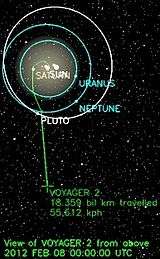
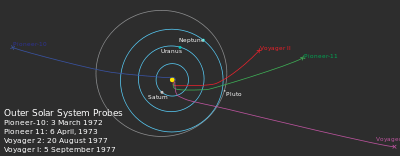
On November 29, 2006, a telemetered command to Voyager 2 was incorrectly decoded by its on-board computer—in a random error—as a command to turn on the electrical heaters of the spacecraft's magnetometer. These heaters remained turned on until December 4, 2006, and during that time, there was a resulting high temperature above 130 °C (266 °F), significantly higher than the magnetometers were designed to endure, and a sensor rotated away from the correct orientation. As of this date it had not been possible to fully diagnose and correct for the damage caused to Voyager 2's magnetometer, although efforts to do so were proceeding.[26]
On August 30, 2007, Voyager 2 passed the termination shock and then entered into the heliosheath, approximately 1 billion miles (1.6 billion km) closer to the Sun than Voyager 1 did.[27] This is due to the interstellar magnetic field of deep space. The southern hemisphere of the Solar System's heliosphere is being pushed in.[28]
On April 22, 2010, Voyager 2 encountered scientific data format problems.[29] On May 17, 2010, JPL engineers revealed that a flipped bit in an on-board computer had caused the issue, and scheduled a bit reset for May 19.[30]
On May 23, 2010, Voyager 2 resumed sending science data from deep space after engineers fixed the flipped bit.[31] Currently research is being made into marking the area of memory with the flipped bit off limits or disallowing its use. The Low-Energy Charged Particle Instrument is currently operational, and data from this instrument concerning charged particles is being transmitted to Earth. This data permits measurements of the heliosheath and termination shock. There has also been a modification to the on-board flight software to delay turning off the AP Branch 2 backup heater for 1 year. It was scheduled to go off February 2, 2011 (DOY 033, 2011–033).
On July 25, 2012, Voyager 2 was traveling at 15.447 km/s relative to the Sun at about 99.13 astronomical units (1.4830×1010 km) from the Sun,[6] at −55.29° declination and 19.888 h right ascension, and also at an ecliptic latitude of −34.0 degrees, placing it in the constellation Telescopium as observed from Earth.[32] This location places it deep in the scattered disc, and traveling outward at roughly 3.264 AU per year. It is more than twice as far from the Sun as Pluto, and far beyond the perihelion of 90377 Sedna, but not yet beyond the outer limits of the orbit of the dwarf planet Eris.
On September 9, 2012, Voyager 2 was 99.077 AU (1.48217×1010 km; 9.2098×109 mi) from the Earth and 99.504 AU (1.48856×1010 km; 9.2495×109 mi) from the Sun; and traveling at 15.436 km/s (34,530 mph) (relative to the Sun) and traveling outward at about 3.256 AU per year.[33] Sunlight takes 13.73 hours to get to Voyager 2. The brightness of the Sun from the spacecraft is magnitude -16.7.[33] Voyager 2 is heading in the direction of the constellation Telescopium.[33] (To compare, Proxima Centauri, the closest star to the Sun, is about 4.2 light-years (or 2.65×105 AU) distant. Voyager 2's current relative velocity to the Sun is 15.436 km/s (55,570 km/h; 34,530 mph). This calculates as 3.254 AU per year, about 10% slower than Voyager 1. At this velocity, 81,438 years would pass before reaching the nearest star, Proxima Centauri, were the spacecraft traveling in the direction of that star. Voyager 2 will need about 19,390 years at its current velocity to travel a complete light year.)
On November 7, 2012, Voyager 2 reached 100 AU from the sun, making it the third human made object to reach 100 AU. Voyager 1 was 122 AU from the Sun, and Pioneer 10 is presumed to be at 107 AU. While Pioneer has ceased communications, both of the Voyager spacecraft are performing well and are still communicating.

Future of the probe
It was thought that Voyager 2 would enter interstellar space in 2016, with its plasma spectrometer providing the first direct measurements of the density and temperature of the interstellar plasma.[34]
However, the spacecraft may instead reach interstellar space sometime in either late 2019 or early 2020, when it will reach a similar distance from the Sun as Voyager 1 did when it crossed into interstellar space back in 2012. Voyager 2 is not headed toward any particular star, although in roughly 40,000 years it should pass 1.7 light-years from the star Ross 248.[35] And if undisturbed for 296,000 years, Voyager 2 should pass by the star Sirius at a distance of 4.3 light-years. Voyager 2 is expected to keep transmitting weak radio messages until at least 2025, over 48 years after it was launched.[36]
| Year | End of specific capabilities as a result of the available electrical power limitations[37] |
|---|---|
| 1998 | Terminate scan platform and UVS observations |
| 2007 | Termination of Digital Tape Recorder (DTR) operations (It was no longer needed due to a failure on the High Waveform Receiver on the Plasma Wave Subsystem (PWS) on June 30, 2002.[38]) |
| 2008 | Power off Planetary Radio Astronomy Experiment (PRA) |
| 2016 approx | Termination of gyroscopic operations |
| 2020 approx | Initiate instrument power sharing |
| 2025 or slightly afterwards | Can no longer power any single instrument |
Golden record
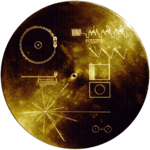
Each Voyager space probe carries a gold-plated audio-visual disc in the event that either spacecraft is ever found by intelligent life-forms from other planetary systems.[39] The discs carry photos of the Earth and its lifeforms, a range of scientific information, spoken greetings from the people (e.g. the Secretary-General of the United Nations and the President of the United States, and the children of the Planet Earth) and a medley, "Sounds of Earth", that includes the sounds of whales, a baby crying, waves breaking on a shore, and a collection of music, including works by Mozart, Blind Willie Johnson, Chuck Berry's "Johnny B. Goode", Valya Balkanska and other Eastern and Western classics and ethnic performers.[40]
See also
- Family Portrait (Voyager)
- List of artificial objects escaping from the Solar System
- List of missions to the outer planets
- New Horizons
- Pioneer 10
- Pioneer 11
- Timeline of artificial satellites and space probes
- Voyager 1
References
- ↑ "VOYAGER:Mission Information". NASA. 1989. Retrieved January 2, 2011.
- ↑ "Voyager 2". US National Space Science Data Center. Retrieved 25 August 2013.
- ↑ "VOYAGER 2". N2YO. Retrieved 25 August 2013.
- 1 2 3 Butrica, Andrew. From Engineering Science to Big Science. p. 267. Retrieved 2015-09-04.
Despite the name change, Voyager remained in many ways the Grand Tour concept, though certainly not the Grand Tour (TOPS) spacecraft. Voyager 2 was launched on August 20, 1977, followed by Voyager 1 on September 5, 1977. The decision to reverse the order of launch had to do with keeping open the possibility of carrying out the Grand Tour mission to Uranus, Neptune, and beyond. Voyager 2, if boosted by the maximum performance from the Titan-Centaur, could just barely catch the old Grand Tour trajectory and encounter Uranus. Two weeks later, Voyager 1 would leave on an easier and much faster trajectory, visiting Jupiter and Saturn only. Voyager 1 would arrive at Jupiter four months ahead of Voyager 2, then arrive at Saturn nine months earlier. Hence, the second spacecraft launched was Voyager 1, not Voyager 2. The two Voyagers would arrive at Saturn nine months apart, so that if Voyager 1 failed to achieve its Saturn objectives, for whatever reason, Voyager 2 still could be retargeted to achieve them, though at the expense of any subsequent Uranus or Neptune encounter.
- ↑ NASA Voyager - The Interstellar Mission Mission Overview
- 1 2 3 Staff (September 9, 2012). "Where are the Voyagers?". NASA. Retrieved September 9, 2012.
- ↑ "Voyager Mission: Weekly Reports of 26 December 2014".
- ↑ "At last, Voyager 1 slips into interstellar space – Atom & Cosmos". Science News. 2013-09-12. Retrieved 2013-09-17.
- ↑ Planetary Voyage NASA Jet Propulsion Laboratory – California Institute of Technology. March 23, 2004. Retrieved April 8, 2007.
- 1 2 "VOYAGER 2:Host Information". NASA. 1989. Retrieved January 2, 2011.
- ↑ "NASA News Press Kit 77-136". JPL/NASA. Retrieved December 15, 2014.
- ↑ "Voyager 2 Craft Details". NASA-NSSDC-Spacecraft-Details. NASA. Retrieved March 9, 2011.
- ↑ Furlong, Richard R.; Wahlquist, Earl J. (1999). "U.S. space missions using radioisotope power systems" (PDF). Nuclear News. 42 (4): 26–34. Retrieved January 2, 2011.
- ↑ NASA/JPL (August 26, 2003). "Voyager 1 Narrow Angle Camera Description". NASA / PDS. Retrieved January 17, 2011.
- ↑ NASA/JPL (August 26, 2003). "Voyager 1 Wide Angle Camera Description". NASA / PDS. Retrieved January 17, 2011.
- ↑ "Voyager 2 Full Mission Timeline" Muller, Daniel, 2010
- ↑ "Voyager Mission Description" NASA, February 19, 1997
- ↑ "JPL Mission Information" NASA, JPL, PDS.
- ↑ Sullivant, Rosemary (November 5, 2011). "Voyager 2 to Switch to Backup Thruster Set". JPL. 2011-341.
- ↑ "Voyager 2, July 9, 1979"
- ↑ Nasa
- ↑ "Fact Sheet". JPL. Retrieved 3 March 2016.
- ↑ Nardo 2002, p. 15
- ↑ "Neptune". Jet Propulsion Laboratory. Retrieved 3 March 2016.
- ↑ "Voyager Weekly Reports". Voyager.jpl.nasa.gov. 2013-09-06. Retrieved 2013-09-14.
- ↑ Notes on Voyager 2 Quick Look Data: Data after November 29, 2006
- ↑ Voyager 2 Proves Solar System Is Squashed NASA.gov #2007-12-10
- ↑ Voyager 2 finds solar system's shape is 'dented' # 2007-12-10, Week Ending December 14, 2007. Retrieved December 12, 2007.
- ↑ John Antczak (May 6, 2010). "NASA working on Voyager 2 data problem". Associated Press.
- ↑ "Engineers Diagnosing Voyager 2 Data System". Jet Propulsion Laboratory. Retrieved May 17, 2010.
- ↑ "NASA Fixes Bug On Voyager 2". Retrieved May 25, 2010.
- ↑ Peat, Chris. "Spacecraft escaping the Solar System". Heavens Above. Retrieved May 23, 2010.
- 1 2 3 Peat, Chris (September 9, 2012). "Spacecraft escaping the Solar System". Heavens-Above. Retrieved September 9, 2012.
- ↑ "At last, Voyager 1 slips into interstellar space – Atom & Cosmos". Science News. 2013-09-12. Retrieved 2013-09-17.
- ↑ "Voyager – Mission – Interstellar Mission". NASA. June 22, 2007. Retrieved August 14, 2013.
- ↑ "Voyager – Spacecraft – Spacecraft Lifetime". NASA Jet Propulsion Laboratory. March 15, 2008. Retrieved May 25, 2008.
- ↑ http://voyager.jpl.nasa.gov/spacecraft/spacecraftlife.html
- ↑ "Voyager – Interstellar Science". NASA Jet Propulsion Laboratory. December 1, 2009. Retrieved December 2, 2009.
- ↑ Ferris, Timothy (May 2012). "Timothy Ferris on Voyagers' Never-Ending Journey". Smithsonian Magazine. Retrieved 15 June 2012.
- ↑ "Voyager Golden record". JPL. Retrieved 18 August 2013.
Further reading
- "Saturn Science Results". Voyager Science Results at Saturn. Retrieved February 8, 2005.
- "Uranus Science Results". Voyager Science Results at Uranus. Retrieved February 8, 2005.
- Nardo, Don (2002). Neptune. Thomson Gale. ISBN 0-7377-1001-2
- JPL Voyager Telecom Manual
External links
| Wikimedia Commons has media related to: |
- NASA Voyager website
- Voyager Spacecraft Lifetime
- Voyager 2 Mission Profile by NASA's Solar System Exploration
- Voyager 2 (NSSDC Master Catalog)
- Spacecraft Escaping the Solar System – current positions and diagrams
- Mission state
- Voyager 2 Detects Odd Shape of Solar System's Edge May 23, 2006
- Voyager 2 software faults at launch, 1977 Aug 20 10:29
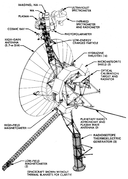
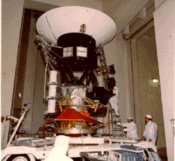

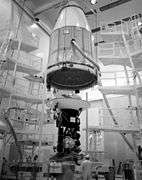
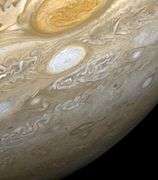
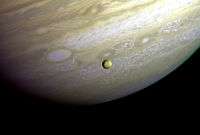
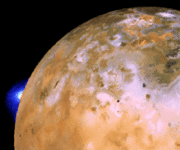
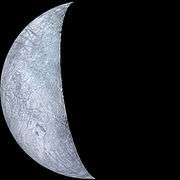
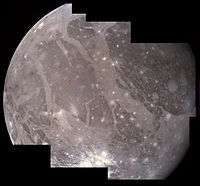
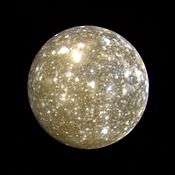
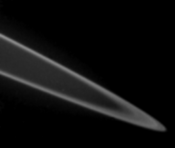

_large.jpg)
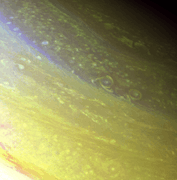
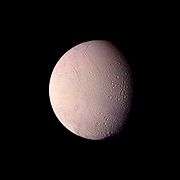
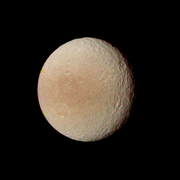
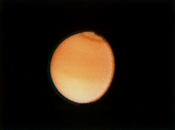

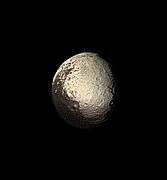
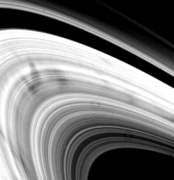


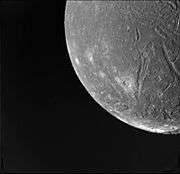
_color_cropped.jpg)

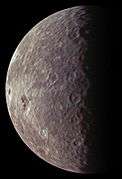





.jpg)
.jpg)

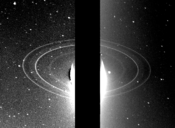


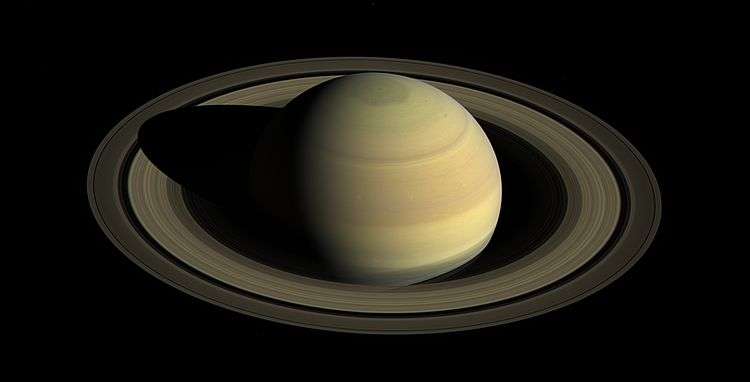
.jpg)
